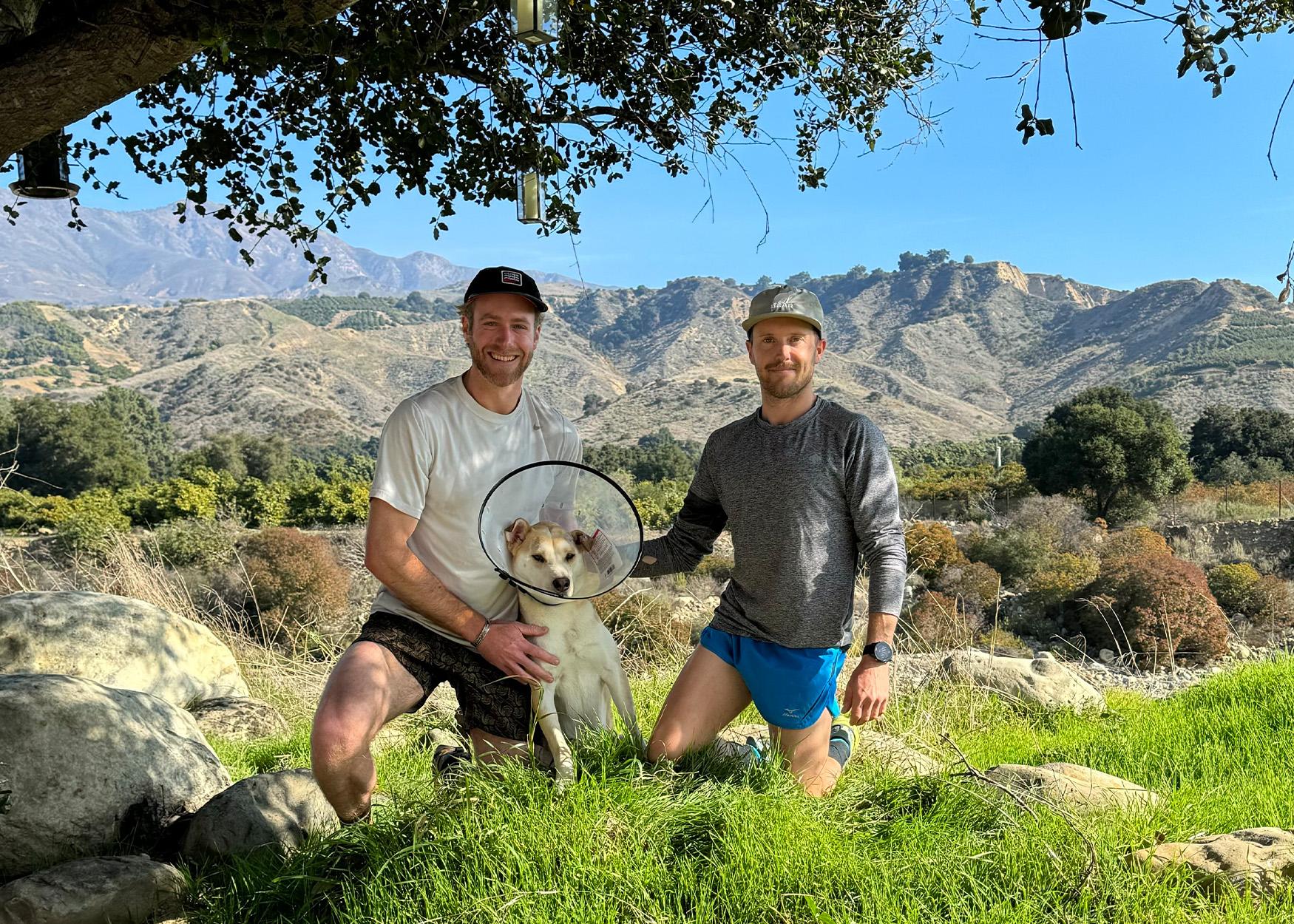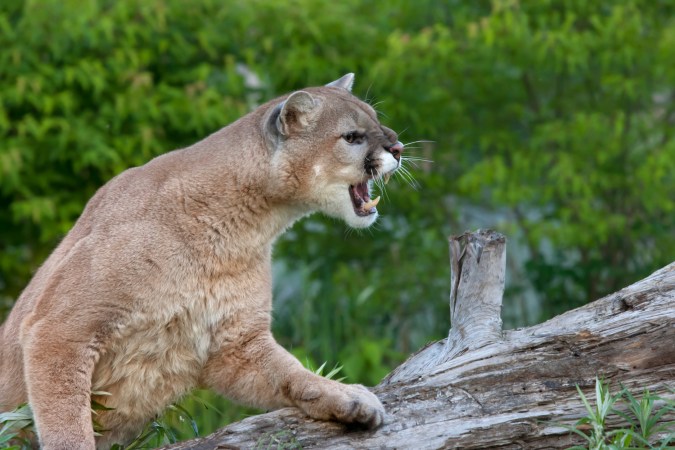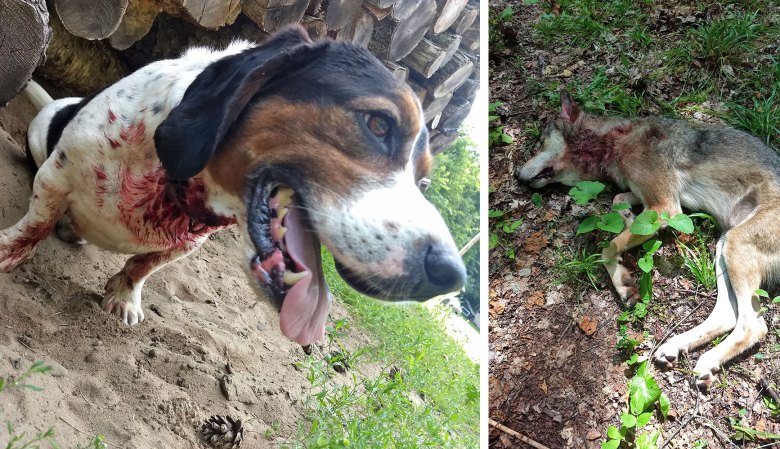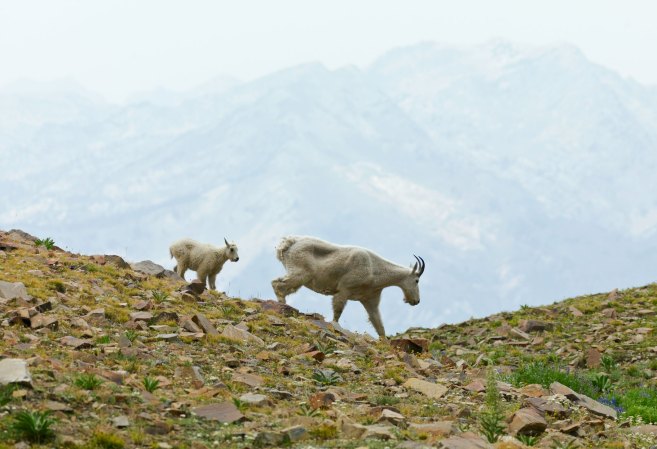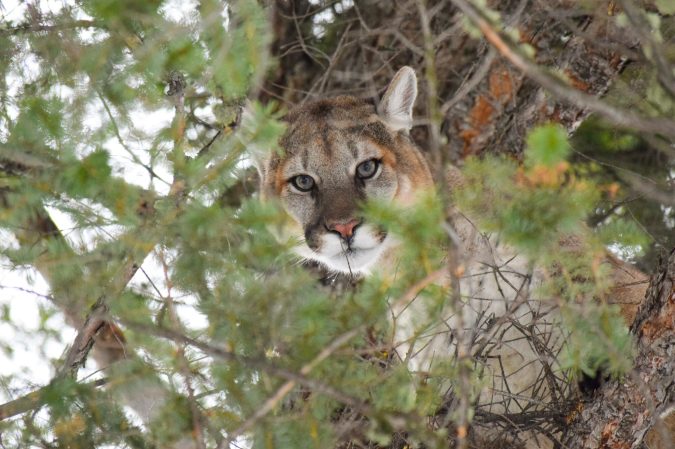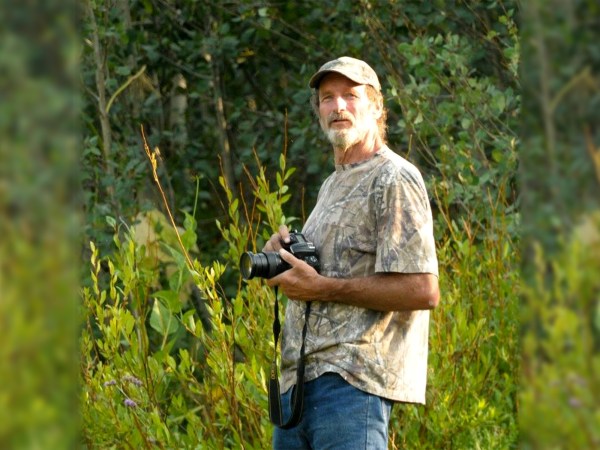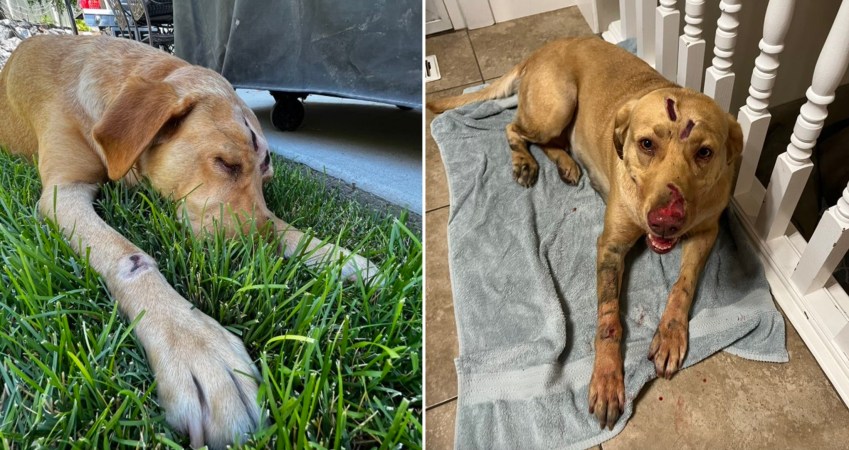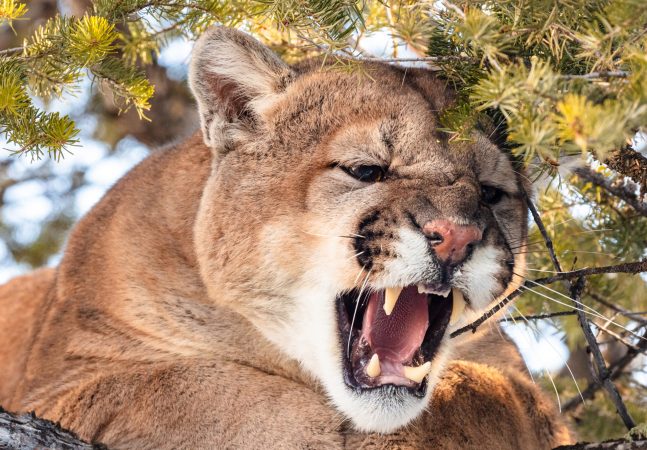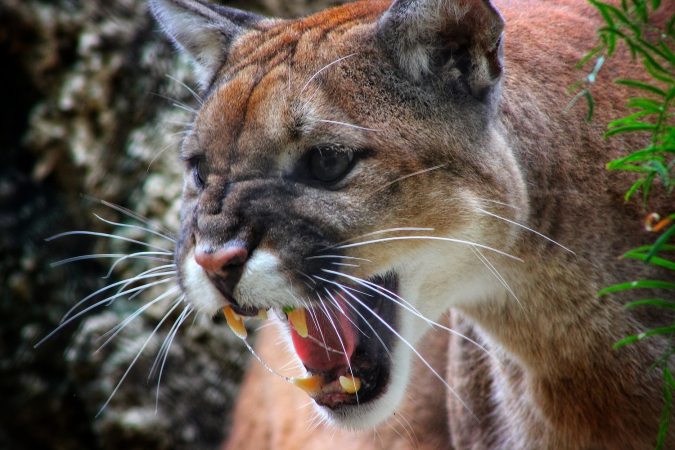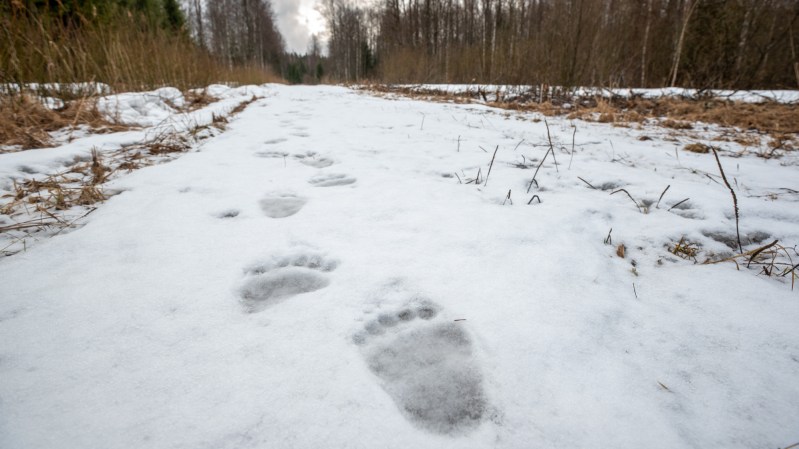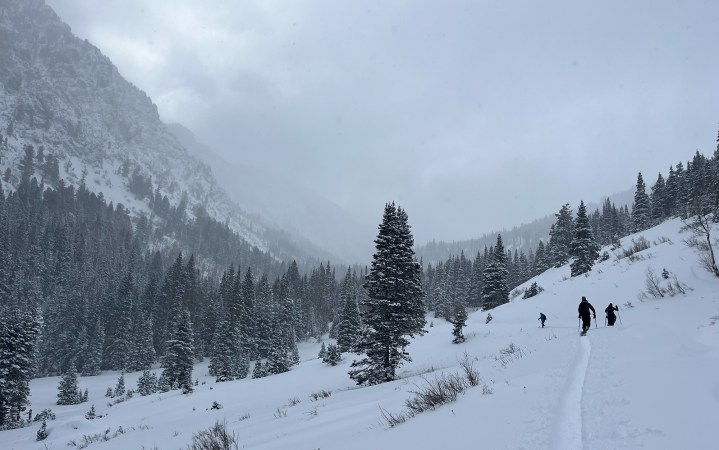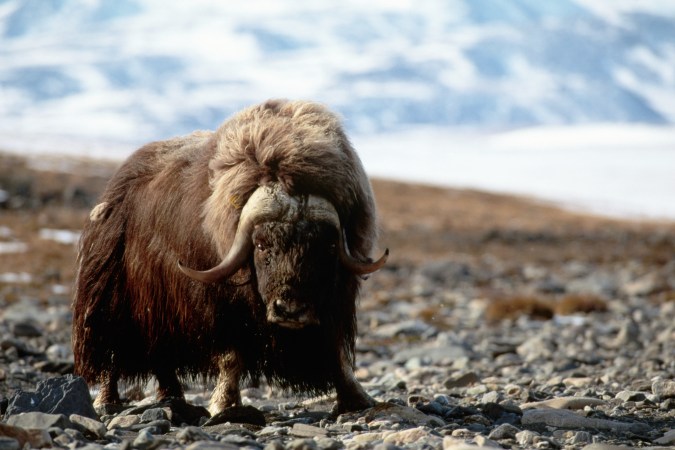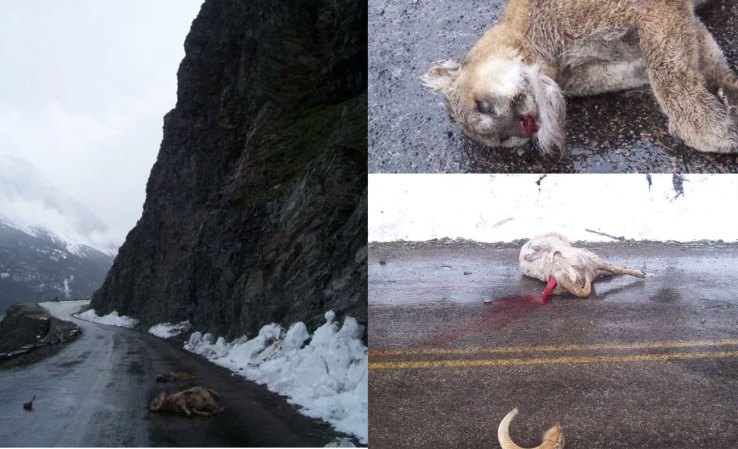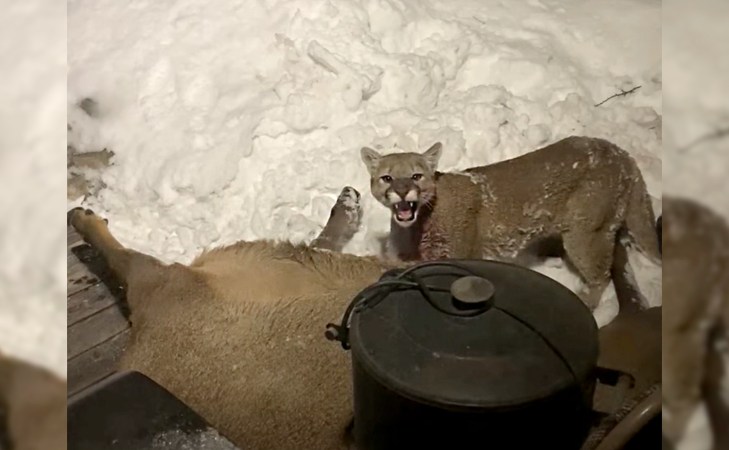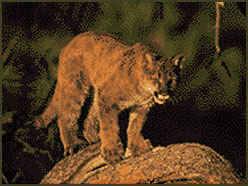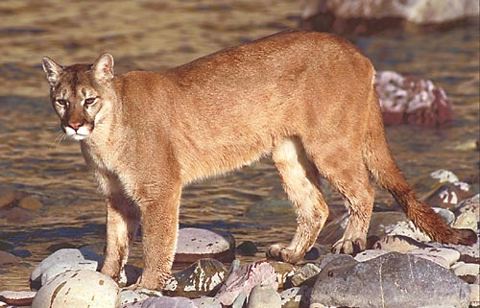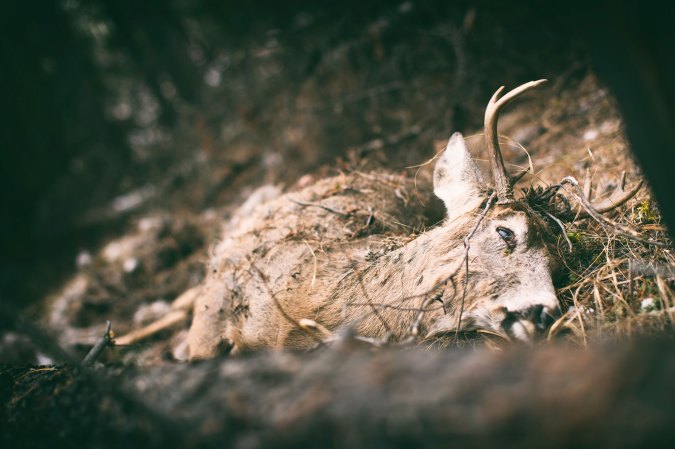It was just after dawn and my trail-running partner Ross and I were descending Sisar Canyon when we heard his dog, Carter, yelp behind us. Without a moment’s hesitation we turned on the spot and ran back up the trail toward the dog’s cries. We kept our pace at a measured sprint — an unspoken understanding to conserve our energy for whatever might lie around the bend. We didn’t know what to expect, but Carter sounded distressed and we knew he had to get there fast.
For some reason, a mountain lion was not on my mind at the time. In hindsight, it should have been the first thing I thought of. A spate of mountain lion incidents here in southern California’s Ojai Valley last winter had prompted me to begin researching and writing about the big cats. In a matter of weeks during February 2023, multiple cougars were killed by vehicles and found dead in local orchards. In one of the more bizarre incidents that month, a cat came face-to-face with a woman in a populated neighborhood in the middle of the day, then snatched up the poodle-terrier she was walking on a short leash. I was in the middle of writing an article about cougars when Ross and I went on our morning run up the canyon on Jan. 10.
Running Off the Lion
As we sprinted around the bend in the dim morning light, Carter came into view under the canopy of a coastal live oak at a fork in the trail. From 20 yards away, the lion was standing atop the 50-pound husky-pitbull mix. The cat’s head was down and it grappled with the dog as it tried to get its jaws around Carter’s throat.
With Ross on my left flank, we came around the bend. The cat looked up, made eye contact, and began running to the left toward Sisar Creek with Carter dangling from its jaws. I sped up and charged straight at the cougar, Ross sprinting beside me.
We were 5 yards away, hearts in our throats, shouting “HEY!” repeatedly in guttural tones. As Ross explained in a radio interview with KCLU: “The first noise I tried to make when we were running [at the mountain lion] nothing came out. There was vomit in the back of my mouth, I was so scared.”
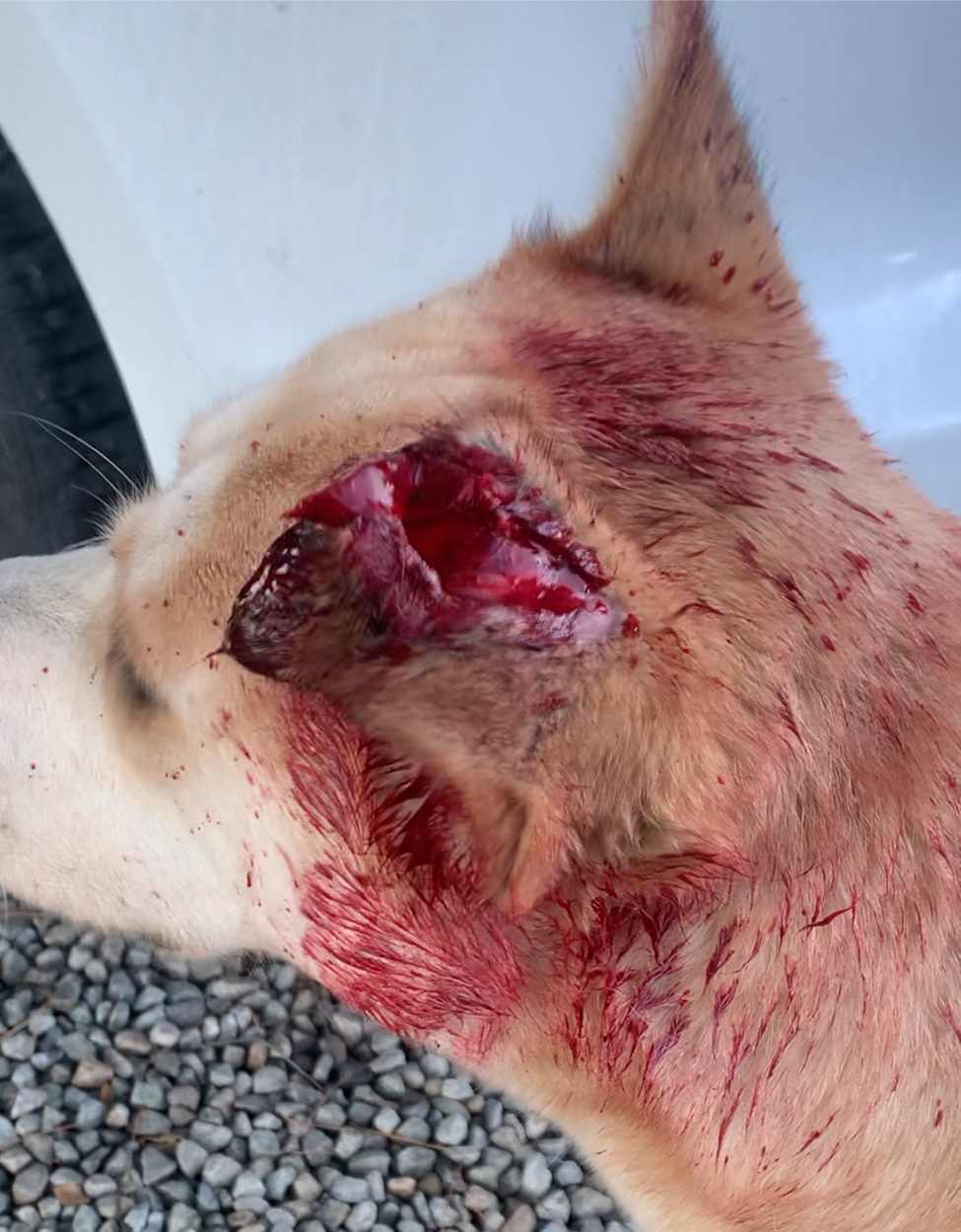
Photograph by Pete Deneen
On my final lunge before I made contact, I still had no plan for how I’d free the dog. With the cat facing me, I figured the safest option would be to lead with my foot and kick it in the head, keeping my face and neck protected.
At the last possible moment, the cougar dropped the dog. It leapt head-high into an oak tree near the trail, but lost its footing and fell to the ground on its back. For a moment, I thought the startled lion would spring back at me or the wounded dog. Instead, the big cat rolled toward the creek and disappeared into the willows.
Bloodied and traumatized, but otherwise remarkably okay, Carter eventually allowed us to approach and leash him. He shook off as if he’d just gone for a swim, splattering us with blood. Carter made the 3-mile run back to my house under his own power despite his de-gloved ear, puncture wounds to his throat and neck, and facial lacerations. The emergency vet stitched him back up and, despite scars and a floppy ear, he now acts like it never happened.
De-Briefing After the Encounter
Anyone who spends time in lion country imagines what they might do in a situation like this one. Experts say two of the best ways to prevent a mountain lion encounter are to avoid dusk and dawn, and to always keep your pet leashed. But every situation is circumstantial. Just ask that Ojai woman who engaged in a tug-of-war with a mountain lion last February and sadly lost. She had her dog on a short leash and was walking in broad daylight down a neighborhood road, yet the lion still accepted the risk and went for her dog, taking its collar and leash along with it. She cites the short lead as a potential disadvantage in her situation. But it’s not always practical (or even possible) to keep your dog leashed outdoors, especially if you’re working, hunting, or running with a dog.
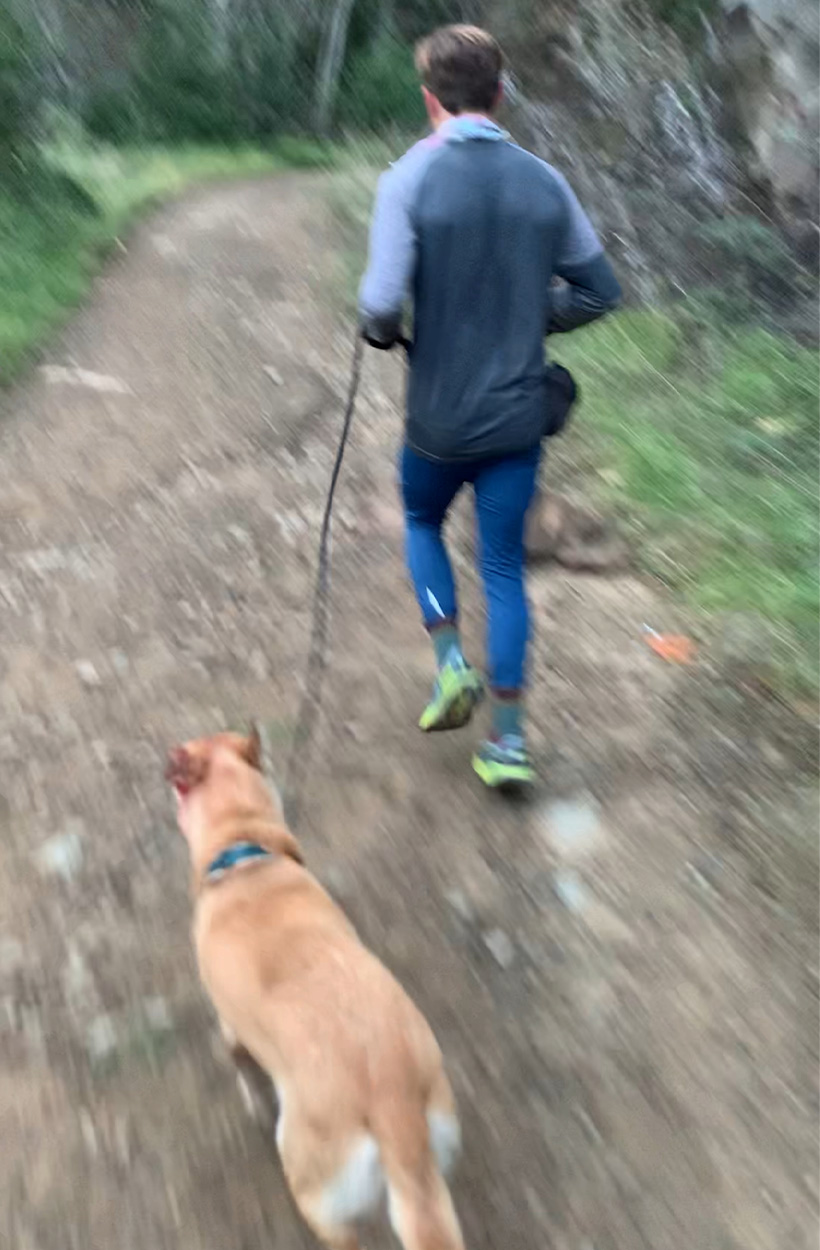
Photograph by Pete Deneen
When coming face-to-face with a mountain lion, the general advice is to make yourself big, get loud, and stand your ground. But there are additional circumstances that dictate the appropriate response: Are you alone? Are you physically able to respond? Is it dark out? Are there cubs around? Does the lion have your pet in its jaws? Who has the element of surprise?
I’m grateful Ross and I were together that morning. Ross, an orthopedic physician’s assistant, is a member of the local search-and-rescue team, and he ran cross country for the University of North Carolina. We’re training for our first ultramarathon later this year.
At 6 feet 3 inches, I have a larger frame than Ross, who affectionately calls me “The Clydesdale.” I’m also a former collegiate soccer player and Coast Guard veteran, and a lifetime of athletics and response training prepared me well for that moment. We agree that there is hardly anyone we would rather be with in that situation than each other.
Read Next: Labrador Retriever Fights Mountain Lion to Protect Family Home
To be presented with a real-life opportunity and react the way we did feels immensely validating. (Attacks on humans by mountain lions are rare, even though the most recent research shows an estimated 4,500 lions in the state. The California Department of Fish and Wildlife has verified six separate attacks on humans since 2020, with the last fatal attack taking place in 2004.) I’m proud that we had the courage to handle the situation head-on, and I’m relieved that Carter is alive and well. I’m more appreciative of mountain lions than I was before the encounter, and more committed to understanding lions and advocating for ways that humans can better coexist with them in their native habitat.
I’d like to think that we also imparted a positive lesson on a resident lion that will likely stay in Sisar Canyon and have plenty more chances to prey on pets and people. Hopefully, the lion will forgo these opportunities because of the experience it had with us.

